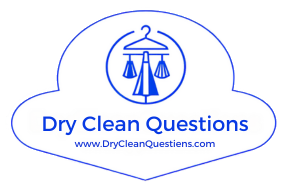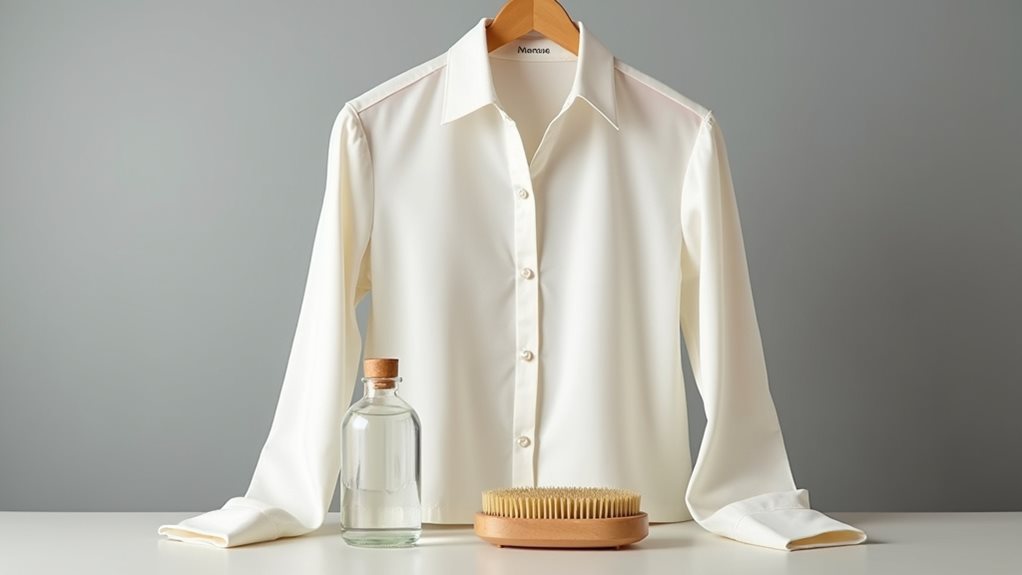Dry cleaning is genuinely excellent for preserving your delicate fabrics like silk, wool, and suits, since it uses specialized solvents instead of water to prevent shrinkage and maintain those crisp silhouettes you’ve invested in. You’ll find it’s particularly effective at removing stubborn oil-based stains that regular detergent simply can’t tackle, though it does come with higher costs and potential chemical exposure concerns. Understanding when to choose professional cleaning over your home washing machine will help you maximize your wardrobe’s longevity.
What Makes Dry Cleaning Different From Regular Washing
While most of us toss our clothes into the washing machine without a second thought, dry cleaning operates on an entirely different principle that can seem almost magical when you first understand it.
Instead of water that makes fabrics swell and potentially shrink, dry cleaning works by using a liquid solvent to clean your garments, which keeps delicate fabrics like silk and wool looking pristine.
This professional cleaning method is incredibly effective at removing those stubborn oil-based stains that water simply can’t tackle, and honestly, it’s saved my favorite blazer more times than I can count 😅.
The gentle process helps extend the life of your cherished pieces while maintaining their original texture and vibrant colors.
The most commonly used solvent in dry cleaning is perchloroethylene, though many cleaners are now switching to newer eco-friendly alternatives for environmental reasons.
Benefits of Using Dry Cleaning Services

Understanding how dry cleaning works naturally leads us to appreciate why so many people swear by these professional services.
After years of watching my own wardrobe transform from a collection of faded, misshapen clothes to pieces that still look boutique-fresh, I can honestly say the benefits are extraordinary.
After years of professional dry cleaning, my wardrobe went from faded and misshapen to looking boutique-fresh with extraordinary results.
The dry cleaning process removes stains that would make you throw up your hands in defeat, especially those stubborn grease marks that laugh at regular detergent.
Your delicate items get pampered treatment they deserve, while professional laundry expertise extends the life of expensive pieces considerably.
Plus, many cleaners now use eco-friendly detergents, so you’re helping the planet while keeping your silk blouses looking absolutely stunning! 💫
Unlike traditional washing methods, dry cleaning uses chemical solvents instead of water to lift dirt and stains without causing the shrinkage or fabric damage that can ruin your favorite garments.
Which Fabrics Require Professional Dry Cleaning
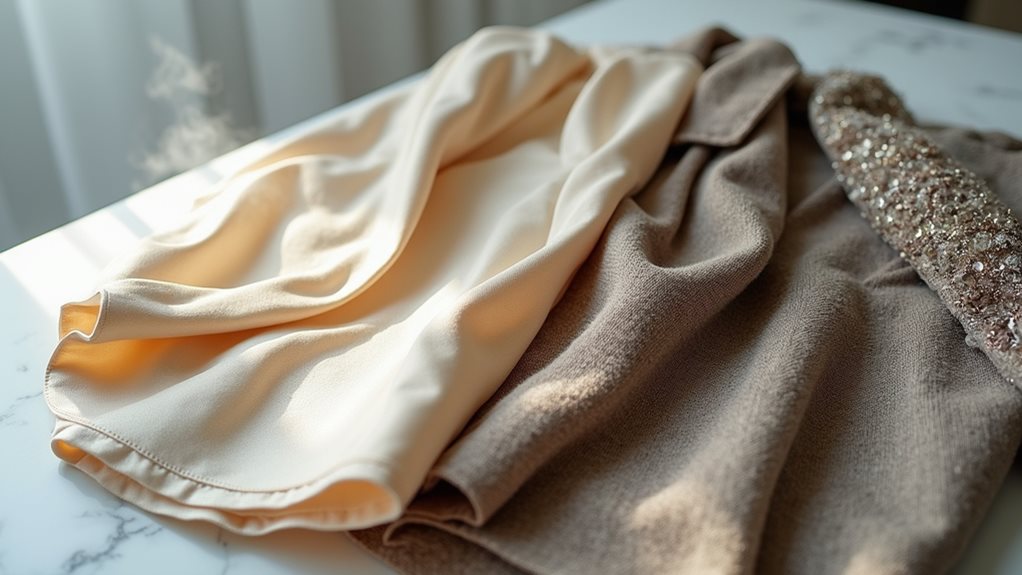
When you’re standing in your closet wondering whether that gorgeous silk blouse can survive a spin in your washing machine, the fabric itself is practically screaming the answer at you – and trust me, I learned this lesson the hard way after turning a beautiful cashmere sweater into doll clothes! 😅
Certain fabrics are like high-maintenance friends who need special treatment, and silk tops that list, starting with delicate materials like silk, wool, velvet, and acetate that react to water and heat like vampires to sunlight.
Your dry cleaner becomes crucial for any garment with sequins, lace, or intricate embellishments that would get mangled in your washing machine, while professional cleaning preserves pleated skirts and lined jackets perfectly.
Dry cleaning uses chemical solvents instead of water to safely remove stains and dirt while maintaining the fabric’s original shape, texture, and color integrity.
Common Myths About Dry Cleaning Debunked
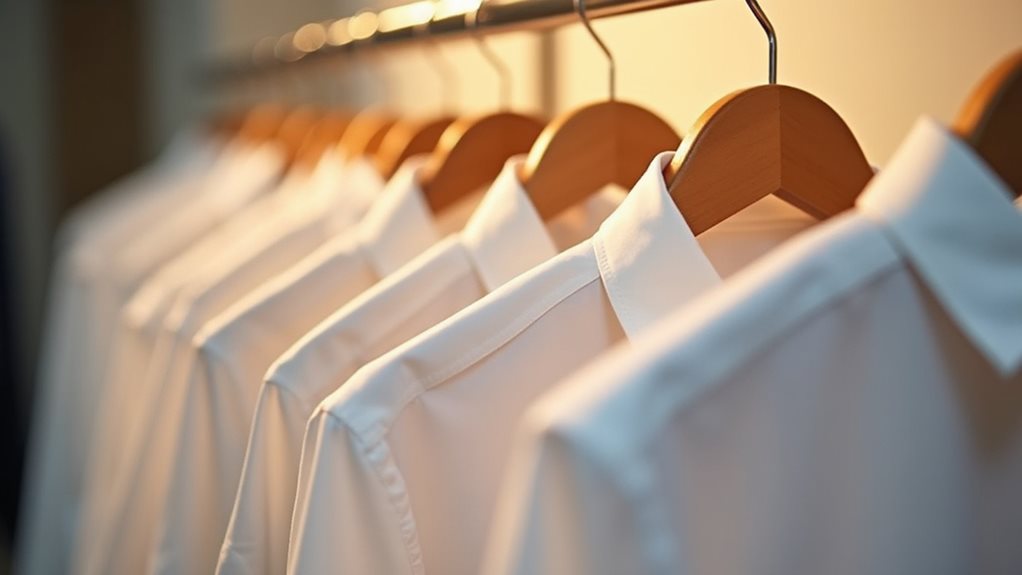
As someone who spent years avoiding dry cleaners because I believed every scary story I’d heard about them, I can tell you that most of what we think we grasp about professional cleaning is complete nonsense – and these misconceptions cost me some seriously gorgeous clothes along the way! 😬
The biggest myth that had me fooled for ages was thinking that only garments with “dry-clean-only” labels needed professional attention, but here’s the truth your favorite blazer won’t tell you: almost any piece in your wardrobe can benefit from the gentle, expert care that dry cleaning provides.
Let me bust the most damaging myths that keep you from getting truly clean clothes:
- Dry cleaning damages fabric (it’s actually more effective than dry heat and water for preserving delicate materials)
- Professional cleaning costs too much (extends garment lifespan considerably)
- Chemical solvents harm the environment (modern eco-friendly solvents are safer than detergents)
- Dry cleaning can’t handle tough spots (professionals excel at removing stubborn stains)
- The process leaves weird smells (quality services shouldn’t have lingering odors)
Quality dry cleaning is usually the best care for delicate pieces you treasure. Unlike traditional washing, specialized solvents effectively tackle oil-based stains and grease while maintaining your garment’s original texture and color integrity.
When to Choose Dry Cleaning Over Home Washing
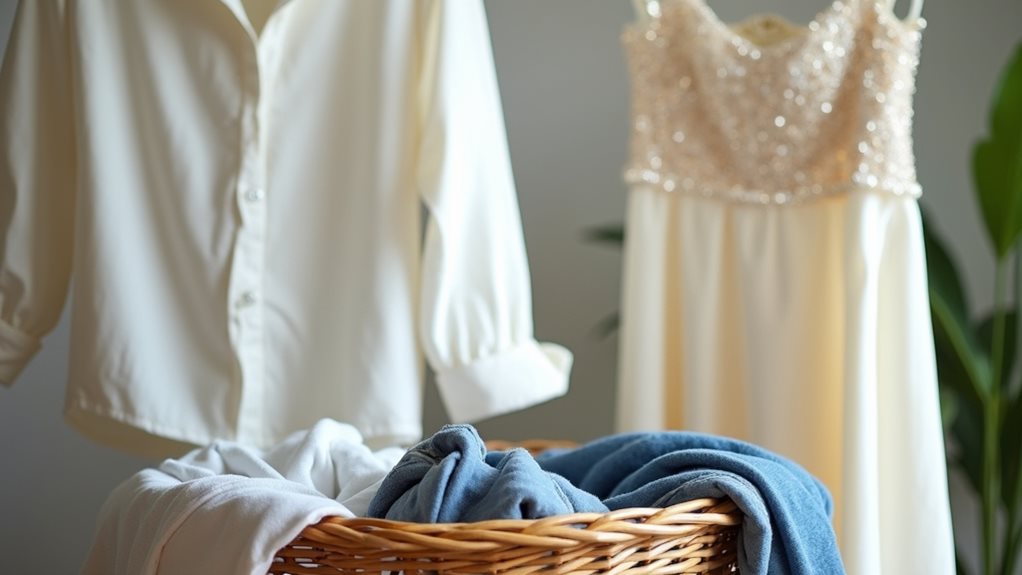
You’ll want to choose dry cleaning when your favorite silk blouse or wool sweater needs attention, because these delicate fabrics can shrink, fade, or lose their luxurious feel when exposed to water and heat from your home washing machine.
I learned this lesson the hard way when I tossed my grandmother’s vintage cashmere cardigan into the wash, only to pull out what looked like doll clothes 😅, which is why I now trust professionals with stubborn grease stains that regular detergent can’t tackle.
The truth is, dry cleaning excels at preserving the shape and structure of your customized pieces, keeping your blazers crisp and your formal dresses looking like they just came off the rack, rather than like they’ve been through a wrestling match with your dryer.
Additionally, garments with intricate details like beaded or sequined items require professional care because the agitation from conventional washing can damage these delicate embellishments and cause color bleeding that ruins the overall appearance.
Delicate Fabric Protection
While I’ve learned this lesson the hard way after ruining my favorite cashmere sweater in a moment of overconfidence, certain fabrics simply weren’t meant to take a spin in your washing machine at home.
Delicate fabrics need the gentle touch that only dry cleaning can provide, and trust me, your garments will thank you for it.
Here’s why dry cleaning protects your most precious pieces:
- Silk, wool, and velvet maintain their luxurious texture without water damage
- Oil-based stains disappear completely without fiber swelling or shrinking
- Intricate details like sequins and lace stay perfectly intact
- Pleats and structured elements keep their crisp appearance
- Regular professional care greatly extends the life of your clothes
The dry cleaning process uses chemical solvents instead of water, which makes it particularly effective for preserving fabric integrity while removing stubborn stains.
Sometimes spending a little extra money upfront saves you from costly wardrobe disasters later!
Stubborn Stain Removal
Why does that one stubborn stain always seem to mock you from your favorite shirt, no matter how many times you’ve scrubbed it at home?
Here’s the truth: some stains need specialized backup, and that’s where dry cleaning swoops in like a superhero with a chemistry degree.
Oil-based stains, makeup mishaps, and that mysterious grease spot from last week’s pizza adventure require solvents that penetrate deeper than your washing machine ever could.
Professional dry cleaners don’t just throw your clothes into a magical machine—they assess each stain individually, applying targeted pre-treatments that home methods simply can’t replicate.
The process uses chemical solvents instead of water to dissolve stains and dirt, making it particularly effective for materials that would be damaged by traditional washing methods.
When you’re dealing with delicate fabrics or time-sensitive stains like wine, choosing professional stain removal over another futile scrubbing session might just save your sanity and your wardrobe.
Garment Shape Preservation
When your favorite blazer emerges from the washing machine looking like it belongs on a scarecrow rather than in your closet, you’ve learned one of fashion’s most expensive lessons the hard way.
Garment shape preservation isn’t just about vanity—it’s about protecting your investment and maintaining that polished look you worked hard to achieve.
Professional dry cleaning offers superior protection for your structured pieces through gentle solvent-based cleaning that won’t cause the fabric swelling and distortion that water-based washing creates.
Here’s why your customized pieces deserve this special treatment:
- Suits maintain their crisp silhouette without shrinking
- Pleated garments keep their structured form intact
- Delicate fabrics like silk avoid fiber damage
- Beaded dresses stay stunning without embellishment loss
- Wool coats retain their original fit perfectly
The chemical solvents used in dry cleaning eliminate the risk of color bleeding that can ruin multi-colored garments during traditional washing.
Potential Drawbacks of Dry Cleaning
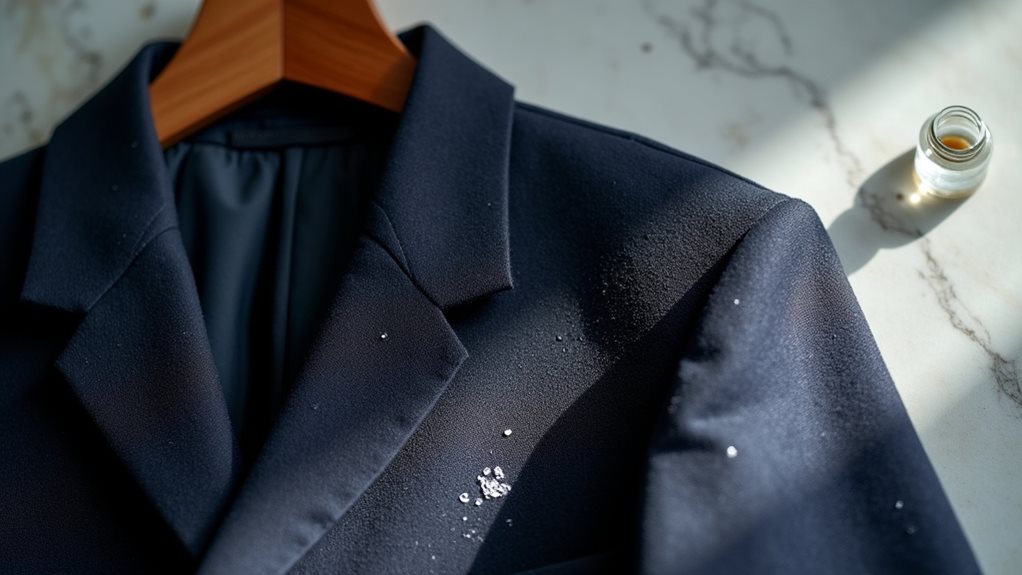
While dry cleaning works wonders for your favorite silk blouse, you’ll want to reflect on some genuine drawbacks that might affect your wallet, your skin, and your daily routine.
The chemical solvents used in traditional dry cleaning can sometimes trigger skin irritation or allergic reactions, especially if you’re sensitive like my cousin Sarah who breaks out in hives whenever she wears freshly dry-cleaned clothes without airing them out first.
You’re also looking at notably higher costs compared to tossing items in your home washer, plus the inconvenience of finding accessible dry cleaning services if you live in a smaller town where the nearest cleaner might be twenty miles away.
Traditional dry cleaning relies on perchloroethylene and other chemical solvents that can pose health risks with prolonged exposure, though modern facilities follow strict regulations to minimize these concerns.
Chemical Exposure Risks
Although dry cleaning can work wonders for your favorite silk blouse or wool coat, the chemical side of this process deserves some serious attention because what makes those solvents so effective at removing stains can also pose real risks to your health.
When you drop off clothes at dry cleaners, you’re likely unaware of the chemical exposure happening behind the scenes. The solvents used in dry cleaning, particularly perchloroethylene (PERC), create several health risks:
- Skin irritation and allergic reactions from repeated exposure
- Neurological issues for workers facing prolonged contact
- Reproductive health concerns in workplace environments
- Carcinogenic properties classified by the EPA
- Respiratory problems from inhaling chemical residues
While brief, occasional exposure to dry cleaned garments is generally considered low-risk for consumers, dry cleaning workers face significantly higher exposure levels and greater health risks due to their prolonged contact with these chemicals in workplace environments.
Fortunately, many facilities now offer eco-friendly solvents and non-toxic alternatives, giving you safer choices for garment care.
Higher Cleaning Costs
Beyond the health concerns that come with chemical solvents, your wallet will definitely feel the pinch every time you visit the dry cleaner.
Honestly, I learned this lesson the hard way when I first started my professional career and suddenly needed to keep my work wardrobe looking sharp.
The higher cleaning costs of dry cleaning your clothes can really add up—while you might spend $3 washing a shirt at home, dry cleaning that same piece could cost $8-15 depending on your location.
However, here’s what I’ve discovered: this expense can actually be an effective long-term investment, especially for delicate fabrics that benefit from professional handling, potentially giving your garments an extended lifespan that justifies the initial sticker shock. 💸
Limited Service Accessibility
Three times I’ve moved to different cities for work, and each time I’ve faced the same frustrating reality: finding a reliable dry cleaner isn’t as simple as locating the nearest grocery store or gas station.
Limited service accessibility creates genuine headaches that you’ll likely encounter when relying on professional dry cleaning.
The accessibility issues you’ll face include:
- Geographic limitations – Rural areas often lack dry cleaning services entirely
- Inconvenient operating hours that clash with your work schedule
- Higher cost of dry cleaning in areas with fewer competitors
- Limited eco-friendly options for environmentally-conscious consumers
- Longer travel distances increasing time and transportation costs
If you’re considering garments requiring professional dry cleaning, honestly assess whether accessible services exist in your area before making purchasing decisions.
How to Choose the Right Dry Cleaning Service
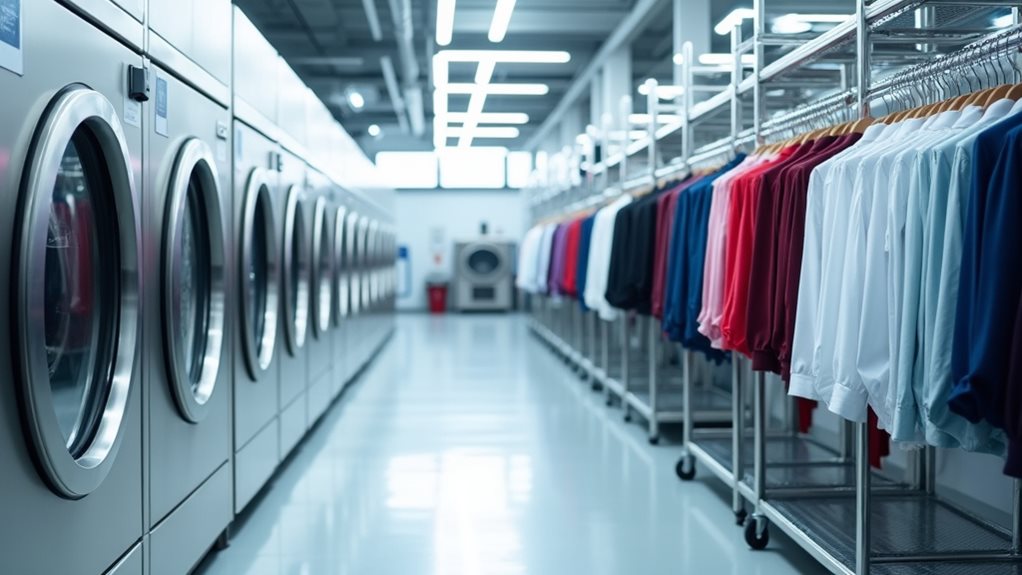
Finding the perfect dry cleaner feels a bit like dating – you’re looking for someone trustworthy who won’t shrink your favorite blazer or turn your white shirt an unfortunate shade of pink 😅.
Start by checking customer reviews online, because honestly, people love sharing their horror stories about ruined garments. Look for cleaners who understand what different dry cleaning uses require, asking questions about the cleaner will use specific solvents for your fabrics.
Always check the care label before dropping off items, especially pieces that might survive regular washing instead. Find someone who tackles tough stains and odors effectively, because that’s where expertise really shows.
Professional certifications matter too – they indicate your cleaner follows industry standards and won’t experiment with your wardrobe.
Proper Care for Your Dry-Cleaned Garments
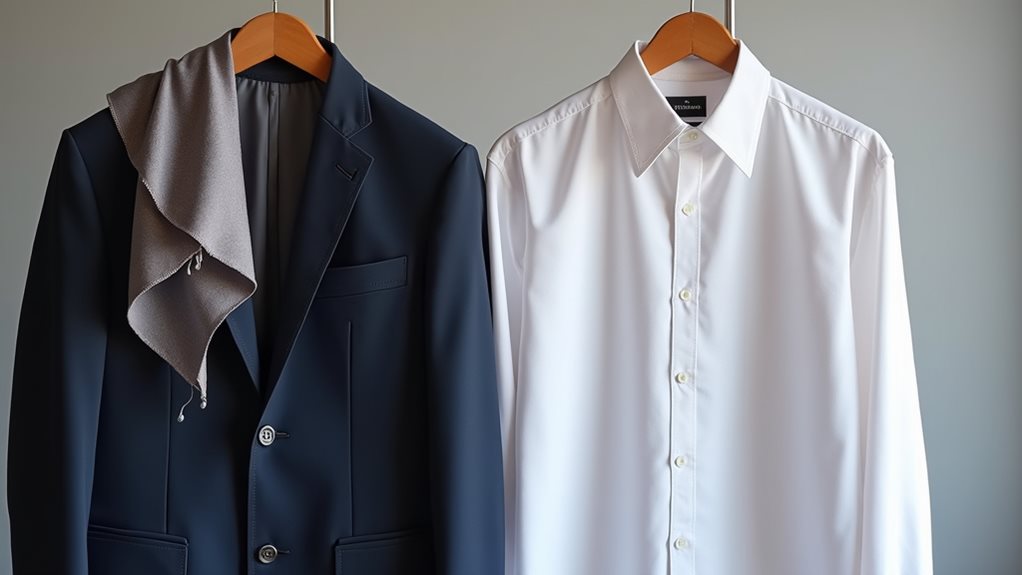
Once you’ve found your dry cleaning soulmate, the real relationship work begins – and honestly, I learned this the hard way after leaving a freshly cleaned wool coat wrapped in plastic for weeks, only to discover mysterious yellow spots that definitely weren’t there before 😬.
Finding your perfect dry cleaner is just the beginning – the real magic happens in how you care for your clothes afterward.
Your dry cleaner did their part perfectly, but proper aftercare determines whether your investment thrives or deteriorates:
- Remove plastic covers immediately to prevent moisture buildup and fabric oxidation.
- Store clothes on padded hangers in breathable garment bags to maintain shape.
- Remove stains through spot-cleaning minor spills before they set permanently.
- Limit sunlight exposure since UV rays fade colors and weaken fibers.
- Schedule regular maintenance with professional dry cleaning for long-term preservation.
Think of it as nurturing a garden – consistent care yields beautiful, lasting results.
